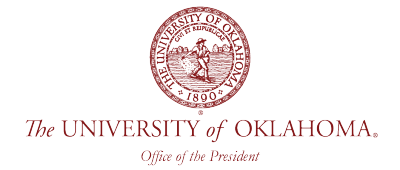
August 25, 2020
Dear OU Norman Community,
This week we begin the start of the Fall 2020 semester – a semester unlike any other in our university’s history. Staff and faculty from across all three of our campuses have worked tirelessly to prepare for our successful return, and we are all endlessly indebted to them for the thousands of hours they have worked, the creative solutions they have crafted, and the extreme care with which they have approached the planning process. The planning that has taken place over the course of the past five months does not stop now that we have welcomed students to campus. We remain vigilant, engaged, and watchful. As we enter this unique semester, we want to pause and share our continued thinking, efforts, and planning.
We are imminently hopeful all of our work will successfully mitigate the spread of the virus; however, we also know there will be an increase in cases on our campus due to our increase in population density. We expect this reality. The questions that come next include: what trends are we watching to assess the scope, scale, and trajectory of positive cases; what will happen if cases increase to a level that we can no longer safely carry out our intended plan; and, in such a case, what would our next steps be to address the situation?
Our measured response contingency plan seeks to allow for maximum flexibility in responding to the evolving COVID-19 situation at OU and in our larger community. Should cases rise at a rate higher than can be sustained with the current population, this plan would be used to maintain the in-person experience at OU to the maximum extent possible. Included in this back-up plan is a set of emerging trends for close observation. Please read on for additional detail.
Health and Health Care Capacity Trends:
- We will monitor both the number of new positive cases, and also the percentage of positives among tests performed, on campus and in the university area. Most communities, including the City of Norman and Cleveland County, have started to see a downward trend in cases over the past two weeks. If we see a sharp reversal of that trend over a two-week period, the university community will be notified that trends are moving in the direction of a potentially measured response.
- Case investigation and contact tracing are essential for an adequate response to mitigate the spread of the virus in our community. If campus and county resources are struggling to meet this demand, the university will adjust its response as necessary with campus health as its priority.
- We will monitor absenteeism among students, faculty, and staff to assess whether students are continuing to thrive and make good academic progress in their in-person classes, and whether we are continuing to offer effective instruction, provide robust student support services, and maintain university operations.
- We must have sufficient housing available to house and support individuals who need to be isolated after exposure to someone with COVID-19 or quarantined after testing positive for the disease. Through use of on-campus housing that has been set aside for this purpose and additional hotel rooms, OU currently has the capacity to provide isolation and quarantine housing for approximately 300 individuals with the ability to further increase capacity with outside contracted housing. We will monitor the usage of these rooms to assess whether we are at risk of reaching capacity. It will also be important for OU to monitor the capacity of regional hospitals to care for COVID-19 patients and to be responsive to signs of stress in the health care system. If disease trends indicate that hospitals are projected to reach full staffed capacity, then additional phased responses may be required.
Our contingency plan will help us formulate possible responses if the transmission of the virus proves to be more challenging for us to contain than hoped. The wide range of those possible responses will involve reduction or modification of student activities on campus as well as moving particular courses from an in-person or hybrid to an online format. In general, Freshman and Senior courses will be prioritized for in-person instruction. Freshmen will benefit from the additional educational and social support provided by an on-campus experience. Seniors may need to complete advanced lab and performance courses in-person in order to graduate. We do not anticipate that our response would significantly affect research operations on campus. Our ultimate goal is to be appropriately responsive to our circumstances while, to the extent practical, providing a predominately in-person educational experience for our students.
We remain hopeful and optimistic that we can carry our current plan throughout the fall semester; however, we want to assure you we are constantly monitoring the situation and will be nimble in our response. To remain OU Together, we must each do all we can to support one another as we navigate the challenges and obstacles that lie ahead. Remember to wear your mask, wash your hands, and practice physical distancing wherever possible. Thank you for doing your part to keep us together.
Live on, University,
Joseph Harroz, Jr.
President
Jill Irvine
Interim Senior Vice President and Provost, Norman Campus


